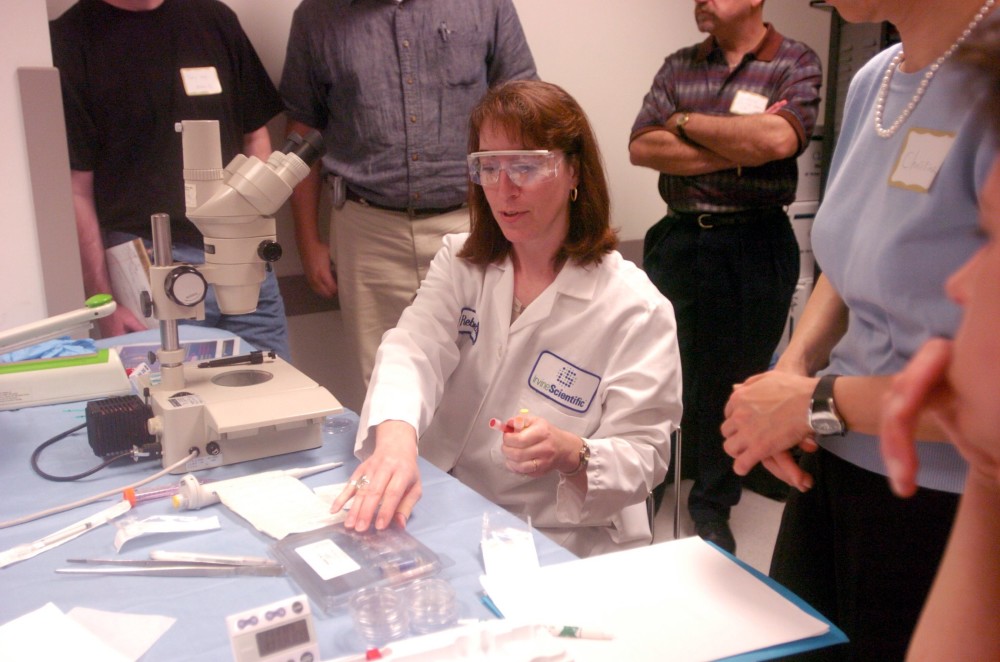By Shreya Punj
Mint, New Delhi.
NEW DELHI
Rigorously scheduled blood tests, hormone injections and ultrasounds–these are some of the simpler ways to freeze donor eggs for fertility treatment. And even these don’t guarantee successful pregnancy.
A study released in August this year by the Journal of the American Medical Association (Jama), Outcomes of Fresh and Cryopreserved Oocyte Donation, showed that fresh donor eggs resulted in more live births per cycle than frozen donor eggs.
The study used data from the 2013 annual report of the in vitro fertilization (IVF) centres in the US published by the Society for Assisted Reproductive Technology to compare live birth and cycle cancellation rates using either fresh or cryopreserved donor eggs, known as oocytes. The study looked at data on women who received donor eggs. There was a 56% success rate for those who received fresh eggs versus 47% for frozen eggs.
“Fresh eggs are better in terms of getting fertilized as not all frozen eggs survive thawing, thereby decreasing the chances available for the fertilization,” said Manisha Singh, consultant gynaecologist and IVF specialist at Fortis Hospital in Bengaluru.
Reasons why egg-freezing may not work
Cryopreservation has been around for decades but gained prominence in October 2014, when two large US corporations, Facebook Inc. and Apple Inc., announced they would pay up to $20,000 to their female employees for freezing their eggs and pursuing their careers.
Sperms were first frozen in the 1950s; embryos followed suit in the 1980s.
Freezing oocytes, however, was more challenging. The oocyte is a large cell and contains water. In the process of freezing the egg, water also freezes, forming sharp crystals that can puncture the cell’s nucleus. The chromosomal matter inside an egg is tightly wound but this becomes stretched in a spindle formation on freezing, thus causing more harm to the egg.
With the advent of improved technology, medical scientists are now better able to protect the cell through cryopreservation.
One such technology is a flash-freezing process called vitrification, which has largely replaced slow-freezing. In vitrification, an egg is placed in a bath with a cryoprotectant and sucrose, a sugar, which helps draw some of the water out of the egg.
buy stromectol generic buy stromectol online no prescription
The egg is then placed in a high-concentration cryoprotectant (a substance used to protect biological tissues from damage due to freezing) for about a minute. This is then placed in liquid nitrogen at temperatures of -196°C, which instantly freezes the egg. In this process, the egg turns into a glasslike substance and avoids the formation of ice, which protects it from damage when it is thawed.
“We’ve had about 10-12 patients since the procedure was set up. Egg freezing for these women has been successful,” said Surveen Ghumman Sindhu, director and head (IVF) at Max Healthcare hospitals in Delhi.
Some women diagnosed with cancer opt for freezing their eggs as a safeguard in case their fertility is affected by the cancer or in the course of treatment, she said.
Advances in technology
In January 2013, the American Society for Reproductive Medicine declared the technique of oocyte cryopreservation (egg freezing) no longer experimental, although it called for “more widespread clinic-specific data on the safety and efficacy of oocyte cryopreservation before universal donor oocyte banking can be recommended”.
“Vitrification is a far better technique. We started using it in India only after egg freezing was declared a standard procedure,” said Sindhu.
The Jama study pointed out that much of the data analysed was from Europe, as few clinics in the US had published their experiences with egg freezing at that time.
The authors also explained how the technologies used to freeze and thaw the eggs had progressed–resulting in probable improvements in success rates.
The question that still hovers over the procedure is whether it is successful for women who are older than 30 years and want to donate their eggs.
Donors are usually in their twenties, when they have healthy, high-quality eggs. The chances of success will likely lessen when the donor women are older.
“The age at which eggs are frozen obviously make a difference. We mostly get patients above 35 years of age. The eggs may look alright, but a frozen egg from a younger woman is always better,” said Sindhu. Implantation of eggs from women aged 38 years and above sees more cases of abortion and genetic abnormalities. Thus, for freezing to be useful, it should be done at a young age, she added.
In case of women who have partners, Singh said it is better to freeze the embryo rather than the eggs. “The embryo has a better chance of surviving the thawing process and the eventual implantation,” said Singh.
Cost of freezing an embryo is slightly higher than freezing an egg.
Even though technology has improved the technique of freezing, there is another, very human problem:not many women come back for their frozen eggs.
“A patient of mine got her eggs frozen but her husband is Hepatitis C positive. We do not begin the fertilization cycle in cases of infection,” said Sindhu.
The couple will now come for IVF only after the patient’s partner is cured of his infection. The eggs, meanwhile, remain frozen, their efficacy untested.














































































































































































































































































































































































